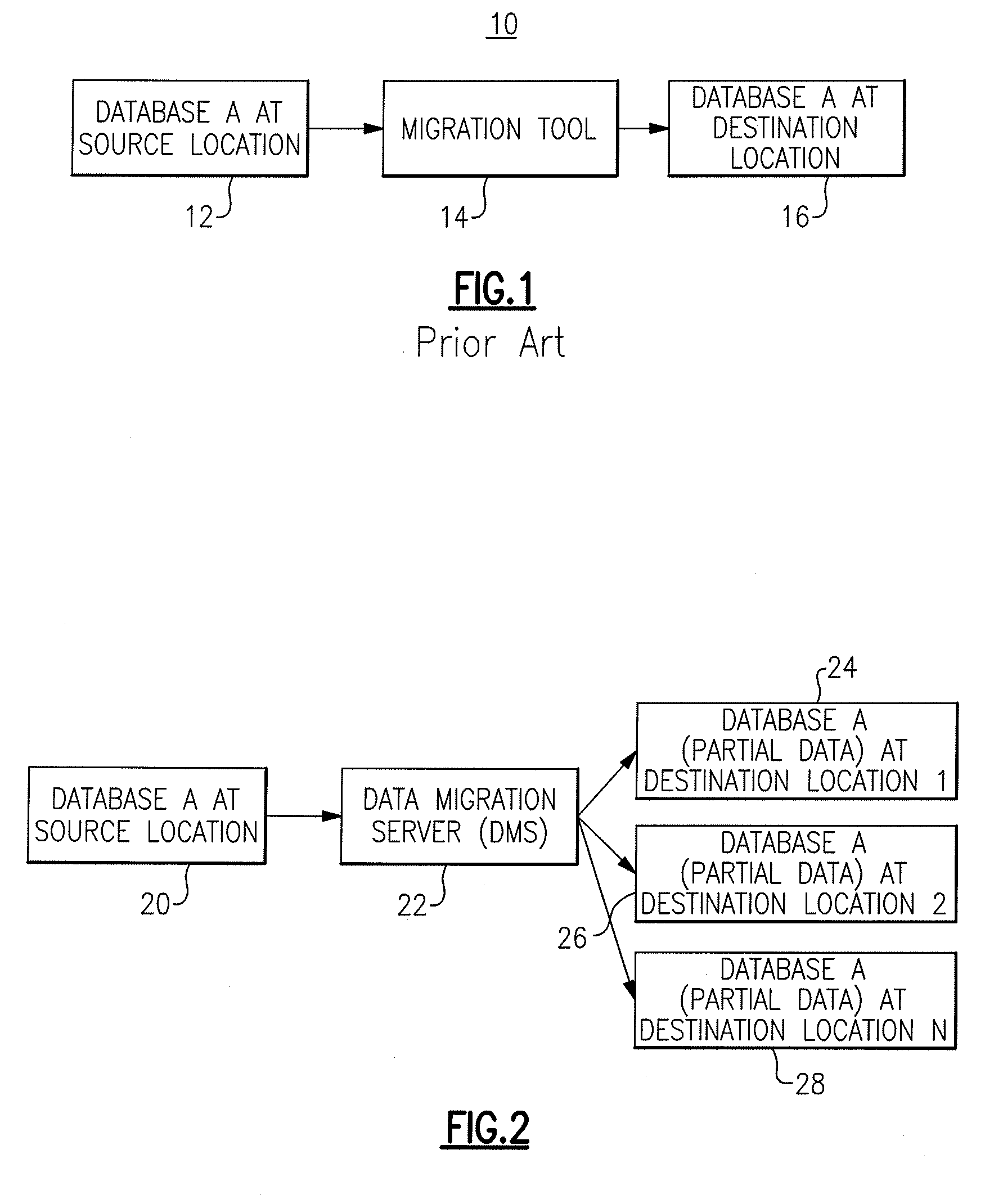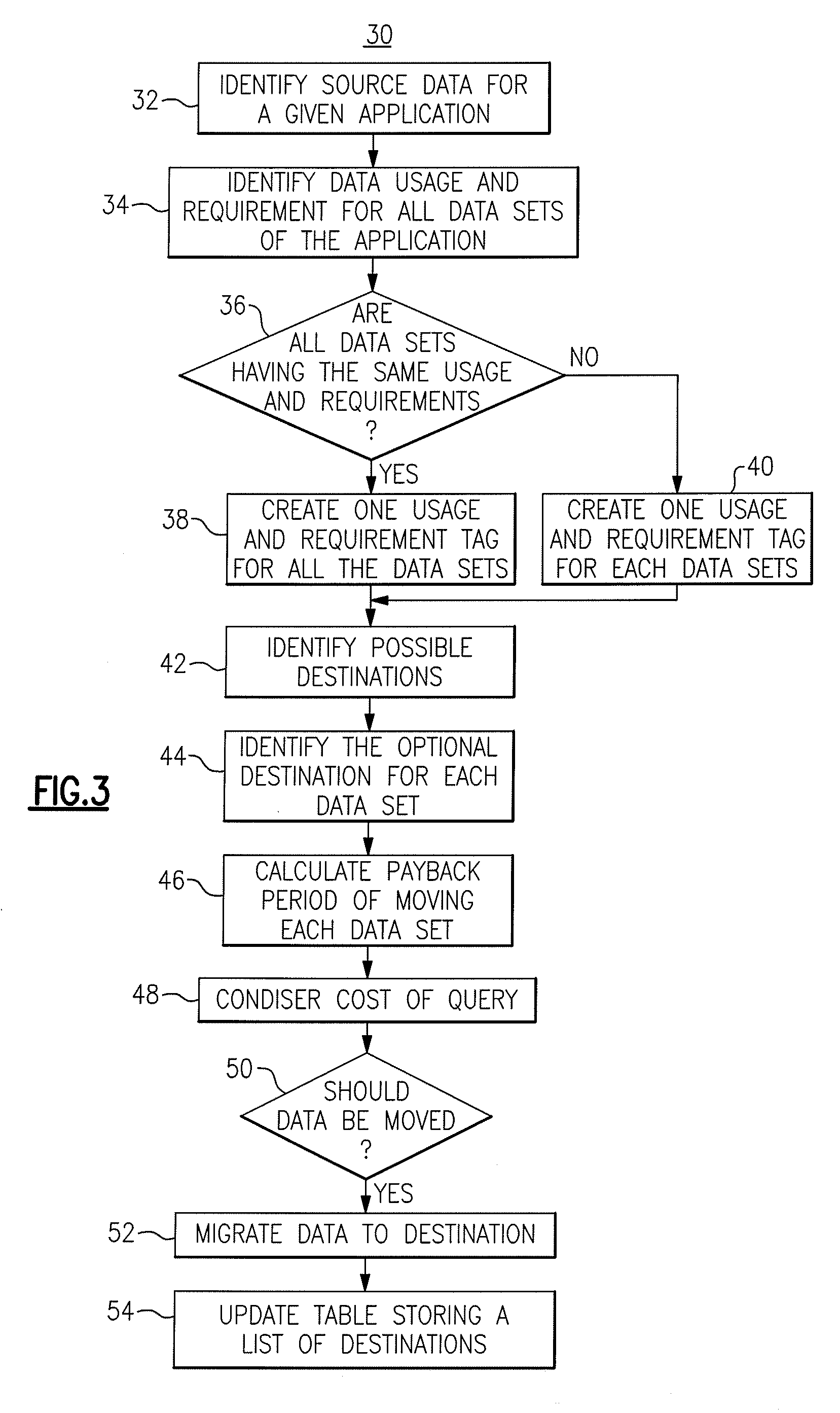Method and System For Data Disaggregation
a data disaggregation and data technology, applied in the field of data migration, can solve the problems of requiring more power than the server itself, and requiring substantial amounts of power to operate and cool
- Summary
- Abstract
- Description
- Claims
- Application Information
AI Technical Summary
Benefits of technology
Problems solved by technology
Method used
Image
Examples
example 1
[0026]In this example, a company's Financial Portal application data is being reviewed to determine if it can be migrated for a cost savings benefit. The Portal contains two databases, a user information database that is used for authentication and authorization (DB_UserInfo) and a financial database that contains various financial data of the company (DB_Financial). The DB_UserInfo database is being used daily by about 300 financial users throughout the company, across the country during office hours. It is assumed that the DB_UserInfo database contains only two Tables, Table_UserLoginInfo and Table_AccessControl. A data usage and requirement tag is created for the entire database by the following queries:
[0027]1. Time restriction: No
[0028]2. Usage frequency: Daily
[0029]3. Expected access time: Within x amount of seconds
[0030]4. Geography of major users: Americas
[0031]5. Peak hours of access: Morning (8 am-6 pm EST)
[0032]6. Amount of concurrent users during peak hours of access: 30...
example 2
[0045]The Financial Portal in Example 1 above is used in this example. In viewing Tables 3 and 4 above, the tag created for DB_UserInfo in Example 1 above may fit into three destination databases. NAS001 currently stores an email database DB_Mail001 that is used by 2000 users in the United States on a daily basis between 8 am and 6 pm EST. Although the power used per operation is fairly low (425 watts per operation), this location may not be the most desirable for storing DB_UserInfo because DB_UserInfo has 300 users accessing the database within the same time slot from 8 am to 6 pm, and users are expecting the response time to be within a few seconds. NAS003 may be more desirable by comparison. Even though it has an email database that is used by users in the same time slot, the number of users is much less in NAS003 than in NAS001. A third candidate choice is NAS002, since the users in NAS002 access the data from 8 am to 6 pm Japan time, which is about 7 pm to 5 am EST. The server...
example 3
[0046]In this example, the database DB_Financial of the Financial Portal is evaluated for migration to the best candidate destination database. It has three datasets with different tags. The VIEW_DailyManagerialTasks is accessed daily only during the morning when the managers would like to see any pending tasks that need their approval. The three candidate choices for this dataset are as follows. The first is NAS001, which may not be a good choice since it already has an email database that is used by 2000 users in the same geographic area for the same time slot. The second option is NAS003, which has two applications (an email database and potentially, the Finance Portal's DB_UserInfo) that use the same time slot. The third choice is NAS002 because it will not conflict with the users that are using the email database (DB_Mail002) due to the time slot it is being used (7 pm-5 am EST). Also, the managers in the United States may not be upset if the data retrieval speed is a few secon...
PUM
 Login to View More
Login to View More Abstract
Description
Claims
Application Information
 Login to View More
Login to View More - R&D
- Intellectual Property
- Life Sciences
- Materials
- Tech Scout
- Unparalleled Data Quality
- Higher Quality Content
- 60% Fewer Hallucinations
Browse by: Latest US Patents, China's latest patents, Technical Efficacy Thesaurus, Application Domain, Technology Topic, Popular Technical Reports.
© 2025 PatSnap. All rights reserved.Legal|Privacy policy|Modern Slavery Act Transparency Statement|Sitemap|About US| Contact US: help@patsnap.com



